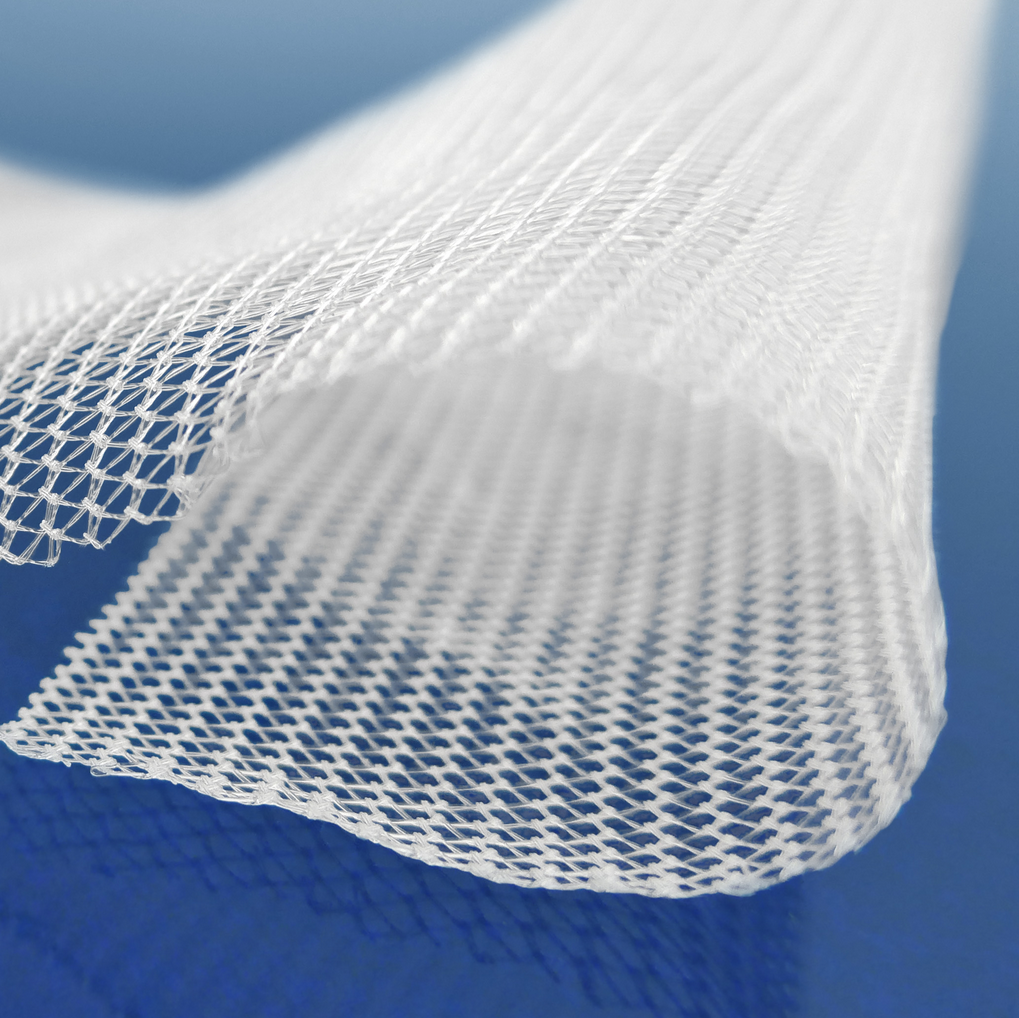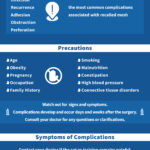Surgical meshes, such as the ones used to repair hernias, have been used in patients dating back to the late 19th century. Today, hernia repair is one of the most common surgical procedures performed in the United States and it is estimated that more than 20 million hernia procedures are performed globally each year. The use of hernia mesh products to repair or reconstruct hernia-related damage is widely accepted as a treatment. In fact more than 80% of hernia repairs performed in the United States use mesh products. At the moment, there are more than 70 types of meshes commercially available. However, despite their commercial success and wide adoption, not all hernia meshes are huge successes for the patients that receive them. In fact, some hernia mesh products have been linked with side effects that include: severe or chronic pain; infections/inflammations; tissue fusion; organ perforation; and worse.
What Is A Hernia?
A hernia generally occurs where an organ, intestine, or fatty tissue squeezes through a hole or weak spot in the surrounding muscle or connective tissue. Typically, hernias occur at the abdomen and sometimes can even be visible as an external bulge while straining or bearing down. Most hernias are caused by a combination of pressure and an opening or weakness within the muscle or connective tissue. The pressure pushes an organ or connective tissue through this opening or weak spot. Although hernias can be present at birth, they are more common later in life and as the result of obesity; lifting of heavy objects; diarrhea or constipation; or persistent coughing/sneezing. Poor nutrition, smoking, and overexertion can contribute to the likelihood of a hernia.
Common Types of Hernias:
- Inguinal: Occurring in the inner groin
- Femoral: Occurring in the upper thigh/outer groin
- Umbilical: Occurring at the belly button
- Ventral: Occurring in the general abdominal/ventral wall
- Incisional: Occurring through an incision or scar in the abdomen
- Hiatal: Occurring inside the abdomen, along the upper stomach/diaphragm
Treatment Options for Hernias
As discussed earlier, hernia repair is a fairly common procedure in the United States. Of these procedures, the majority of hernia repairs involve inguinal hernias. Standard treatment options can include:
- Non-Surgical (i.e. “watch, wait and see”): Surgery is the only treatment option for a hernia. However, for patients who are not experiencing complications or symptoms associated with their hernias, the surgeon may recommend a “watch, wait and see” approach to make sure that the hernia is not getting larger or causing other issues.
- Surgical:
- Laparoscopic: A surgeon will make several small incisions in the patient’s abdomen which will allow surgical tools to be inserted to repair the hernia. Laparoscopic surgery may or may not involve the use of surgical mesh.
- Open Repair: This type of procedure involves an incision near the hernia for the purpose of repairing weak muscle tissue and, as before, may or may not involve the use of surgical mesh. If regular sutures are used in lieu of mesh, the procedure is referred to as “primary closure” and is typically used to repair inguinal hernias in infants, small hernias, strangulated or infected hernias.
Surgical Mesh and Hernia Recurrence
Surgical mesh is a medical device typically constructed from either synthetic materials or animal tissue, which is used to provide additional support to weakened or damaged tissue. Synthetic mesh is typically produced in “knitted” mesh or “non-knitted” sheet format and can be absorbable, non-absorbable, or a combination of absorbable/non-absorbable materials. Conversely, animal-derived mesh (animal tissue such as intestine or skin) is considered absorbable. The non-absorbable mesh is typically used to provide permanent reinforcement to the repaired hernia while not losing any strength over time. The absorbable mesh will degrade and is not intended as a long-term solution, favoring instead the promotion of new tissue growth to strengthen the repair instead.
Statistically, hernias have a high rate of recurrence and as a consequence, surgeons favor mesh as a tool to strengthen hernia repair and reduce the potential for recurrence. In 2000, non-mesh repairs represented less than 10% of groin hernia procedures. However, despite the reduction in recurrence, the overt reliance on mesh in hernia repair and explosion in its use belie the fact that surgical mesh is not always the best tool for hernia repair under all circumstances. Patients are encouraged to have a frank discussion with their surgeon about the benefits and possible consequences from having surgical mesh implanted in their bodies.
Who Makes Hernia Mesh?
Hernia mesh products are manufactured around the world by a long list of firms that vary widely in size and stature. Below are some of the more commonly recognized manufacturers and their mesh products:
| Manufacturer | Products/Brands |
| Atrium Medical | C-Qur Mesh, C-Qur Tac Shield, C-Qur V-Patch, C-Qur Edge, C-Qur Lite Mesh V-Patch, C-Qur Edge Mesh V-Patch, C-Qur V-Patch Mesh, C-Qur OVT Mesh, C-Qur RPM Mesh, C-Qur Mosaic, C-Qur FX, C-Qur CentriFX |
| Davol (C.R. Bard) | Composix Kugel Mesh, Composix E/X Mesh, Composix L/P Mesh, Perfix Plug, 3DMax, Sepramesh IP Composite, Ventralex Hernia Patch, Ventralex ST Hernia Patch, Ventrio Hernia Patch, Ventrio ST Hernia Patch, Visilex, Marlex, Spermatex |
| Covidien (Medtronic) | Paritex Composite Mesh, Surgipro Mesh, Monofilament Mesh, Composite Mesh, Optimized Composite Mesh, ProGrip Self-Fixating Mesh, Parietex Plug and Patch System, Symbotex Composite Mesh |
| Gore | DualMesh, DualMesh Plus |
| Ethicon (Johson & Johnson) | Physiomesh, Prolene Plug, Prolene PHS, Proceed Surgical Mesh, Prolene 3D Patch, Ultrapro Lightweight Mesh |
Issues with Hernia Mesh (Complications and Risks)
The hernia mesh industry is both highly profitable and highly competitive for manufacturers. The pressure to remain competitive in the marketplace for these devices compels the companies behind them to introduce “new and improved” products at a very rapid pace. Accordingly, most new synthetic mesh brands such as Ethicon’s Physiomesh and Atrium’s C-Qur line were “fast-tracked” through U.S. Food and Drug Administration (FDA) approval review using the 510(k) clearance process. Consequently, some issues with these devices may have been overlooked or not identified prior to implantation in human patients. In particular, post-market surveillance studies of mesh products have revealed that the synthetic polypropylene material used by many manufacturers has caused problems for patients. Some of the more common issues tied to hernia mesh include:
- Migration: Movement of the hernia mesh within the body.
- Contraction: The mesh will collapse on itself and no longer cover the hernia location.
- Adhesion: Scar-like tissue creation that can cause the tissue to “stick” or bind together.
- Fistula: Leakage into body cavities or through the skin due to an abnormal connection between the organs or intestines.
- Perforation: A hole or the bowels or neighboring organs due to contact irritation or an abrasion from the mesh.
Mesh Product Recalls and Lawsuits
Flexible Physiomesh (Ethicon/Johnson & Johnson)
By virtue of its aggressive marketing to both patients and doctors by its manufacturer, Ethicon (itself a subsidiary of global pharmaceutical/medical device behemoth Johnson & Johnson), the Physiomesh line of mesh products was implanted in a large number of patients prior to a “voluntary” global withdrawal of its flexible mesh from the market in 2016. The withdrawal came on the heels of years of evidence and post-market surveillance suggesting defects which caused: premature disintegration; adhesion; contraction and perforations. Physiomesh is now the subject of multidistrict litigation naming Ethicon as a defendant in federal court in Georgia (MDL-2782).
C-Qur (Atrium Medical)
The C-Qur line of mesh products was distinguished by the incorporation of an Omega-3 fatty acid gel coating made from pharmaceutical grade fish oil. The ostensible purpose for the coating was to prevent polypropylene adhesion in patients. However, the coating instead produced adverse reactions and severe side effects in some patients as well as critical organ damage in others. In 2013, the FDA issued a “Class II Recall” of the C-Qur Edge mesh that extended to its C-Qur V-Patch, TacShield, and Edge products. Atrium has yet to voluntarily remove any C-Qur products from the market. C-Qur is now the focus of multidistrict litigation in federal court in New Hampshire (MDL-2753).
Composix Kugel Mesh (Davol/C.R. Bard)
Another aggressively marketed product to both patients and surgeons alike, the Composix Kugel Mesh by C.R. Bard subsidiary, Davol, was designed especially for incisional hernia procedures. Specifically, the mesh was built around a unique “recoil ring” that permitted the device to be inserted into the body while folded. Once implanted, the ring would open in place behind the incision. Regrettably, this design feature is also one of the main issues with the Composix Kugel Mesh: Postmarket surveillance reporting has found cases where the ring broke apart and migrated throughout the body, puncturing organs and tissue along the way. The Composix Kugel Mesh and Davol/C.R. Bard are now embroiled in multidistrict litigation in federal court in Ohio (MDL-2846).

Sources Cited (20)
1) “Past, Present and Future of Surgical Meshes: A Review” https://www.ncbi.nlm.nih.gov/pmc/articles/PMC5618132/
2) “The clinical effectiveness and cost-effectiveness of open mesh repairs in adults presenting with a clinically diagnosed primary unilateral inguinal hernia who are operated in an elective setting: systematic review and economic evaluation.” https://www.ncbi.nlm.nih.gov/books/NBK326920/
3) “Hernia Surgical Mesh Implants” https://www.fda.gov/medical-devices/implants-and-prosthetics/hernia-surgical-mesh-implants
4) “Inguinal Hernia” https://www.mayoclinic.org/diseases-conditions/inguinal-hernia/symptoms-causes/syc-20351547
5) “Hernia” https://my.clevelandclinic.org/health/diseases/15757-hernia
6) “Stony Brook Medicine: FAQs about Mesh in Hernia Repairs — What Patients Need to Know” https://www.stonybrookmedicine.edu/hernia/resources/faqs-about-mesh-in-hernia-repairs
7) “Which mesh for hernia repair?” https://www.ncbi.nlm.nih.gov/pmc/articles/PMC3025220/
8) “Hernia Repair” https://www.health.harvard.edu/a_to_z/hernia-repair-a-to-z
9) “Mesh and No-Mesh Hernia Repair” https://www.medstarwashington.org/our-services/surgery/treatments/hernia/mesh-and-no-mesh-repair/
10) “About Your Hernia Surgery” https://www.medtronic.com/us-en/patients/treatments-therapies/hernia-surgery.html
11) “The Many Types of Hernia Mesh Explained” https://michiganherniasurgery.com/posts/hernia-repair/the-many-types-of-hernia-mesh-explained/
12) “Chronic abdominal pain secondary to mesh erosion into cecum following incisional hernia repair: a case report and literature review” https://www.ncbi.nlm.nih.gov/pmc/articles/PMC3959323/
13) “Is surgical mesh safe for my hernia surgery?” https://www.ucihealth.org/blog/2018/06/mesh-hernia-repair
14) “Mind the gap: imaging spectrum of abdominal ventral hernia repair complications” https://www.ncbi.nlm.nih.gov/pmc/articles/PMC6439043/#:~:text=any%20abdominal%20surgery.-,Specific%20complications%20related%20to%20hernia%20repair%20include%20recurrent%20hernia%2C%20mesh,%2C%20fistula%20formation%2C%20and%20infertility.
15) “Hernia Surgical Mesh Implants: FDA Activities” https://www.fda.gov/medical-devices/hernia-surgical-mesh-implants/hernia-surgical-mesh-implants-fda-activities
16) “The regulatory ancestral network of surgical meshes” https://www.ncbi.nlm.nih.gov/pmc/articles/PMC6007828/
17) “Mesh materials and hernia repair” https://www.ncbi.nlm.nih.gov/pmc/articles/PMC5571666/
18) “Late-onset Deep Mesh Infection: A Study of Eight Cases Detected from 2666 Consecutive Patients with Abdominal Wall Hernia Repairs” https://www.ncbi.nlm.nih.gov/pmc/articles/PMC4976579/
19) “NIH: Inguinal Hernia” https://www.niddk.nih.gov/health-information/digestive-diseases/inguinal-hernia
20) “Surgical mesh for ventral incisional hernia repairs: Understanding mesh design” https://www.ncbi.nlm.nih.gov/pmc/articles/PMC4806756/



